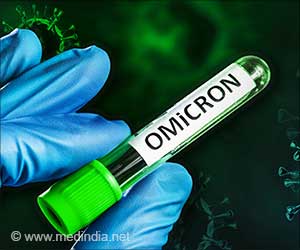
‘Inhibiting two host cell proteases could help prevent COVID-19.
’
Tweet it Now
Spike glycoproteinThe outer surface of coronaviruses contains a critical protein called spike glycoprotein, or S-glycoprotein. Responsible for giving the coronavirus its typical crown shape, the S-glycoprotein is essential for the entry of viral particles into host cells. Host cell proteases, however, must the first process or cut this viral surface protein to allow the virus to enter the cells.
Pellecchia's lab and others have recognized that in addition to a previously identified protease called TMPRSS2, the new SARS-CoV2 coronavirus could also be processed by an additional human protease, called furin, for viral entry.
"The use of the host protease furin for processing is a common mechanism of cell entry by both viral fusion proteins and certain bacterial toxins," said Pellecchia, a biomedical sciences professor who led the research team. "SARS-CoV2 uses this mechanism also. The nature of the 'proteolytic cleavage' in its S-glycoprotein can determine whether this virus can be transmitted across species, for example, from bats or camels to humans."
A fusion protein combines the attributes of more than one protein. Proteolytic cleavage refers to the process of breaking the peptide bonds between amino acids in a protein, which results in cutting the protein.
Advertisement
Spotlight on inhibitors
Advertisement
A clinical trial with COVID-19 patients recently began using the TMPRSS2 inhibitor camostat.
"We found, however, that camostat is a poor furin inhibitor," Pellecchia said. "Our current study, therefore, calls for the development of additional protease inhibitors or inhibitor-cocktails that can simultaneously target both TMPRSS2 and furin and suppress SARS-CoV2 from entering the host cell."
Pellecchia added that the presence of a furin cleavage site in SARS-CoV2 was linked to increased pathogenicity. But genetic elimination of furin in cellular laboratory studies failed to stop viral entry, suggesting TMPRSS2 remains the most relevant protease.
Using peptide sequences from SARS-CoV2 S-glycoprotein, however, his team has now demonstrated the new mutations in this coronavirus strain resulted in efficient and increased processing of viral entry by furin and TMPRSS2.
"In other words, SARS-CoV2, unlike other less pathogenic strains, can more efficiently use both proteases, TMPRSS2, and furin, to start the invasion of host cells," Pellecchia said. "While TMPRSS2 is more abundant in the lungs, furin is expressed in other organs, perhaps explaining why SARS-CoV2 is capable of invading and damaging multiple organs."
Pellecchia's lab has already identified potent and effective preclinical inhibitors of furin and demonstrated these inhibitors could be developed as potential COVID-19 therapeutics, perhaps in combination with drugs such as camostat, the TMPRSS2 inhibitor.
Source-Eurekalert














